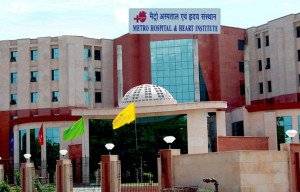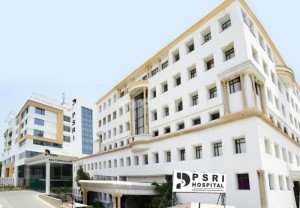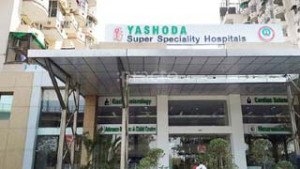Best Ovarian Cysts, Andashay ka Ganth Treatment In India
Related By Gynaecology
cyst in ovary treatment are sacs in or on the surface of the ovary that are generally filled with fluid. Females are born with two ovaries. Each side of the uterus has one ovary.
Each ovary is around the size and shape of a little almond. In the ovaries, eggs grow and mature. During the reproductive years, eggs are produced in monthly cycles.
Ovarian cysts are rather frequent. Most of the time, there is little or no discomfort, and the cysts are completely harmless. Most ovarian cysts resolve on their own within a few months.
However, cysts in ovarian cancer can twist or explode at any time (rupture). This can result in significant symptoms of ovarian cyst . Get frequent pelvic examinations and be aware of the ovarian cyst symptoms that might indicate a significant condition to safeguard your health consult with best surgeons of ace medicare.
| # | {packageDetails.name} Treatment Cost | Average Price | Price |
|---|---|---|---|
| 1 | The cost of ovarian cyst removal surgery in India. | 65000.00 | 30000.00 - 100000.00 |
Package Details
Everything about cyst in ovary treatment
This article enlists everything about cyst in ovary treatment their causes, symptoms, types, treatments, cost, doctors and more. Just click on the information you want to read, and the tab will take you to that part.
Ovarian cysts: What are they?
The majority of the time, ovarian cyst causes are microscopic fluid-filled sacs that can form within or on the surface of your ovaries during the ovulation process. They are very typical among women who are fertile and typically disappear on their own within the following two to three menstrual cycles. It's interesting to note that small ovarian ovarian cysts frequently generate no symptoms other than a slight bloating or feeling of fullness in the pelvic region. However, the issue arises when the cyst does not spontaneously rupture and instead starts to enlarge.
Larger than 2.5 cm ovarian cyst in ovary treatment begin to cause abnormal abdominal swelling, intense pelvic discomfort, excruciating nausea, vomiting, and agony when passing stools. Additionally, you might have irregular periods, a rapid loss of weight and odd soreness during sex. At this point, the larger cyst must be surgically removed.
The ovarian cyst can also start to impair ovulation, lead to PCOD (a disease where the woman's ovaries have several microscopic ovarian cysts on their surface), and make conception extremely challenging if it is not identified and treated in a timely manner. In unfavourable circumstances, they also face the danger of ovarian rupture, which is when the ovaries explode, or in certain cases, ovarian torsions, which is when the ovarian cysts twist around their blood supply.
How are they created?
Although hormonal imbalances, pregnancy, endometriosis, or pelvic infections are the typical causes of cyst in ovary treatment , different kinds of ovarian cysts arise in various ways. For instance,
Functional Cysts: Functional ovarian cysts are created as a result of the basic operation of the ovaries, as the name implies. They come in two varieties and are often asymptomatic and benign (non-cancerous).
Follicular cysts: The most typical type of ovarian ovarian cysts is a follicular cyst. They develop as a result of ovulation and can be anywhere in size between a pea and an orange.
A woman's ovaries typically release five to twenty eggs (oocytes) wrapped in small fluid-filled structures known as follicles during her normal reproductive cycle. then, as one of them, each month To help in conception, the egg develops, the follicle bursts open, luteinizes, and funnels into the fallopian tube. The issue arises when, instead of this egg-producing follicle breaking open, the ovum inside it progressively deteriorates and starts to vanish. Here, the sack continues to luteinize and fill with fluid even if the egg no longer exists. A follicular cyst develops when this fluid-filled sac keeps growing instead of splitting apart.
Ovarian Cyst - Related Symptoms
- Groyne discomfort
- Abdomen swollen
- Recurring bloating
- Vomiting and nauseous
- Pain when emptying your bowels Increase in the frequency and urgency of urinating
- Rapid weight reduction
- Unreliable cycles
- Pain during sexual contact Obstetrical challenges
Ovarian Cyst Diagnosis and Treatment
Here are a few tests your doctor could order for you:
Blood Tests: Blood tests examine a sample of your blood for any anomalies. The blood test may aid your doctor in determining the type of your ovarian cyst or any abnormal hormone levels.
High-frequency sound waves are used during imaging tests to create a picture of your interior organs, tissues, and blood flow. They can support the verification of the cyst's existence, location, shape, size, and makeup. The next step to confirm the ovarian cyst is typically a straightforward pelvic ultrasound. However, in some less common situations, other imaging tests such as an MRI, CT scan, or sonography may also need to be taken into account.One of the most sophisticated forms of pelvic exams is laparoscopy.
A laparoscope, a specialised medical device, is used to determine the exact position and size of your ovarian cyst. In this procedure, your doctor first uses an anaesthetic to numb your body. Once you are rendered unconscious, a very small incision the size of a keyhole is then created nearby. The physician passes a thin tool with a camera and light on its end—the laparoscope—through this. With the use of this camera, your surgeon can accurately diagnose your ovarian cyst and determine its precise position and size.
A CA 125 blood test may be recommended if your doctor suspects ovarian cancer. CA is essentially a cancer antigen. Women who possess this greater concentration may be a sign of malignancy. Please take note that the outcomes are not always definitive. Other concurrent medical issues include liver disease, heart failure, endometriosis, uterine fibroids, pelvic infections, and heart failure.
Ovarian Cyst, Ovarian Cyst
- Cysts greater than 5 cm are often regarded as serious and necessitate surgical removal.
- Cystectomy is usually required for severe bilateral or multilateral ovarian cysts.
- An ovarian cyststhat are solid, semi-solid, or filled with blood are often harmful and have a high likelihood of becoming malignant (cancerous).
Risks & Complications of the Treatment for Ovarian Cysts
Internal bleeding can occur in the rare event that a surgical mistake causes the cyst or the tissue surrounding it to break open.
Infection:
If the cyst bursts apart and its interior contents—follicular fluid, blood, mucus, various tissue cells, and sebaceous fluidsplatter onto the nearby tissues, an infection may result. It may also be the consequence of surgical malpractice or the body's natural response to certain metals or substances.
Women who have previously had an ovarian cyst have a significant likelihood of doing so once again.
Even though ovarian cystectomy is designed to just remove the cyst and never the ovaries, there may be situations when ovary removal seems to be your only alternative.This rarely occurs in extremely rare circumstances, such as when the lady has ovarian cancer or the cyst has caused serious gynaecological crises. In these circumstances, an oophorectomy (the surgical removal of the ovaries) is required, which permanently compromises both a woman's fertility and her ability to produce natural hormones.
Harm to adjacent organs: In a few rare instances, the nearby organs may also sustain damage. Ovarian rupture or torsion is a severe condition that might result in this, or the operation could go wrong.
Avoidance - Ovarian Cyst
Unfortunately, there is no specific or effective strategy to avoid the development of an ovarian cyst since it either occurs naturally or as a side consequence of the ovaries' regular operation. However, there are several lifestyle modifications you may make to lessen the likelihood of it growing or having an impact on fertility.
Which are:
jog, jog, jog! Take a daily 30-minute stroll. Half of all illnesses can be prevented with an active lifestyle and a healthy BMI. Exercise improves hormone balance, pumps more oxygen into our blood, and regulates blood flow. This is why every doctor, whether they are online or not, normally starts their patients out with a 30-minute walk. Several instances demonstrate how a straightforward, consistent act ofWalking helped hundreds of women overcome the challenges brought on by PCOS, helped them regulate their hormones, and made conception easier.
Having a balanced diet "You are what you eat" is a proverb. This couldn't be more accurate. Sometimes a balanced, nutritious diet may do miracles that even magicians couldn't! For this reason, we advise eating in moderation at regular intervals and times. This would assist your body in establishing a strict biological clock, assisting digestion, and correcting hormone imbalances—one of the main causes of ovarian ovarian cysts . Additionally, diets high in fibre slow down the body's absorption of oestrogen. Consequently, consuming dry fruits, whole grains, lentils, and fruit such as apples and pears can be quite helpful. Second, make sure you get enough water! Drink some water throughout the day to stay hydrated and keep your body well-nourished so that it is always ready to fend off emergencies.
Rate of Ovarian ovarian cysts Recovery
Your surgical method of choice will have the most impact on how quickly you recuperate.
Open-cut procedures result in a bigger cut, therefore recovery takes longer. The full recuperation process might take anywhere between 15 and 20 days.
In contrast, because laparoscopic surgery (keyhole surgery) uses small, exact incisions, it has a quicker recovery period. In this case, you can start working again after 4-5 days off.

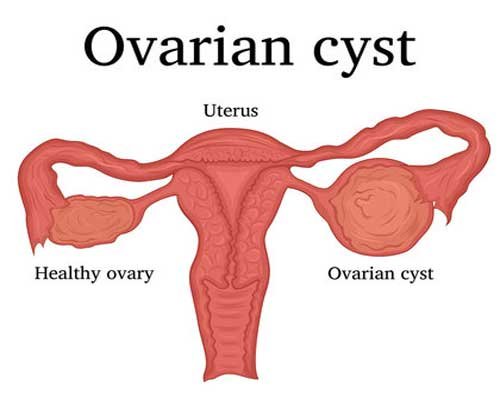
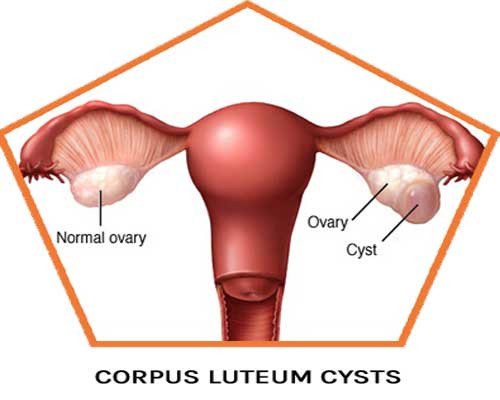












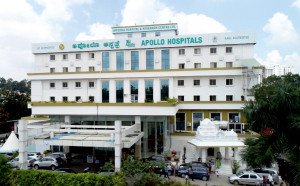


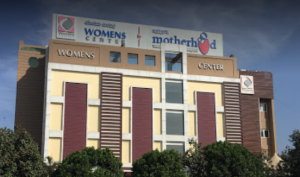


.jpg)



